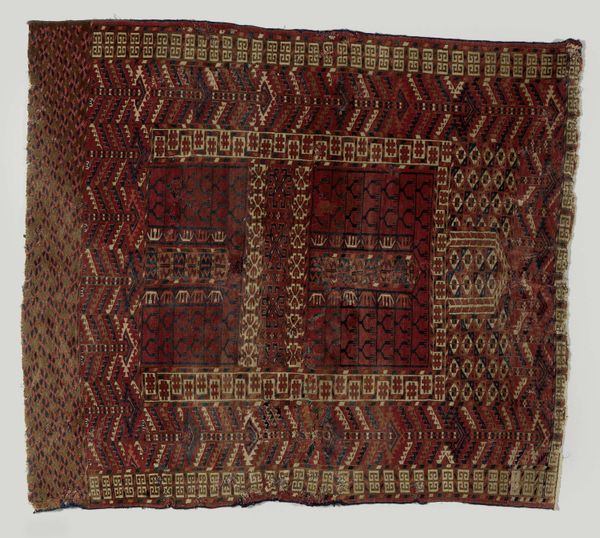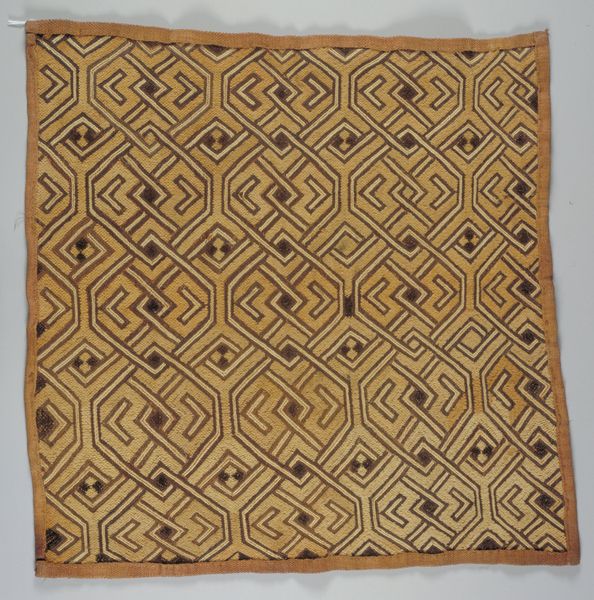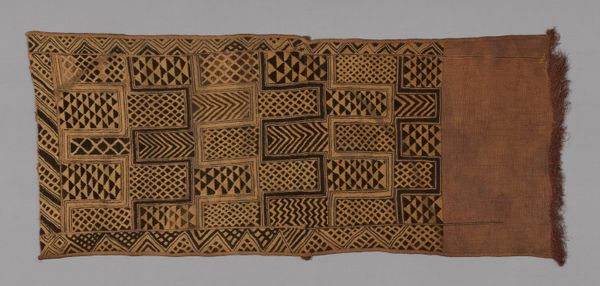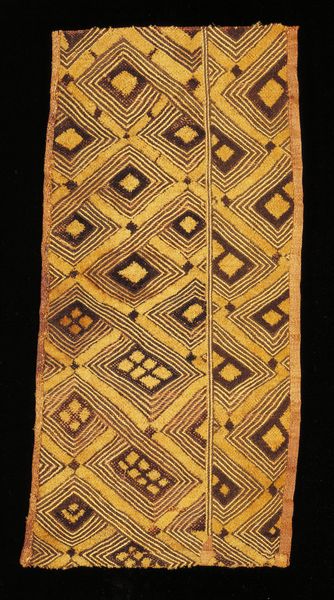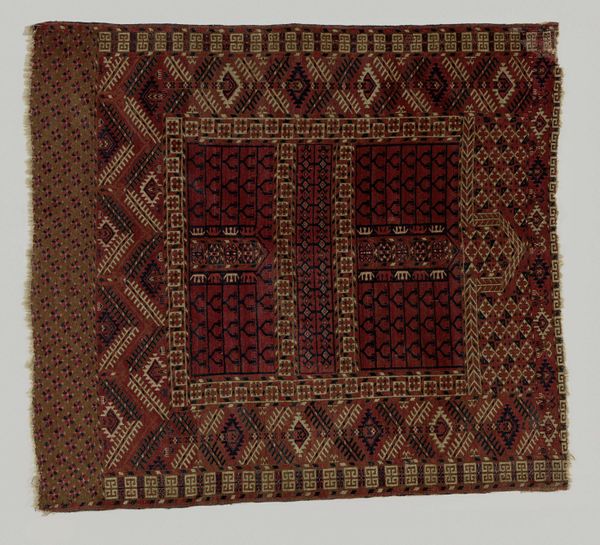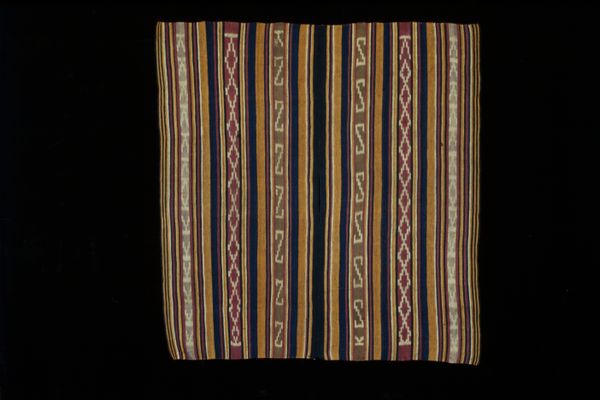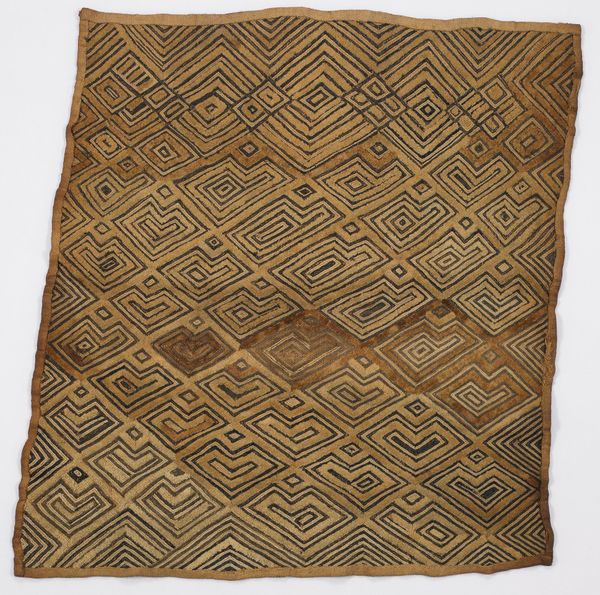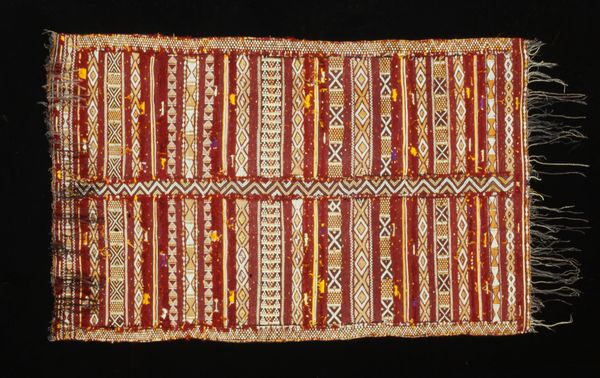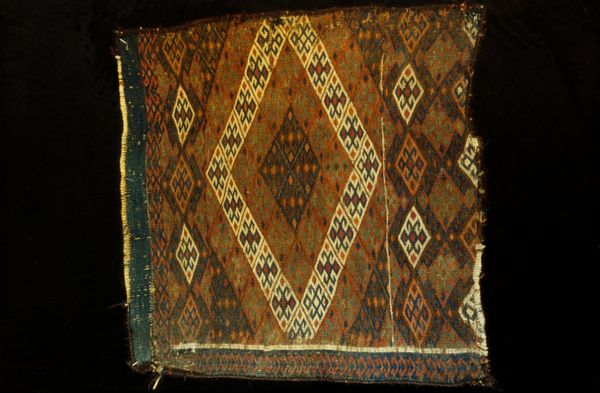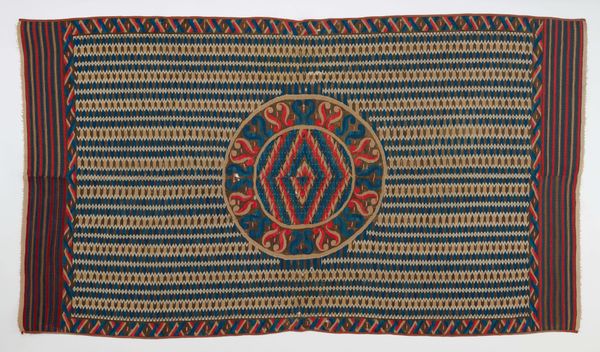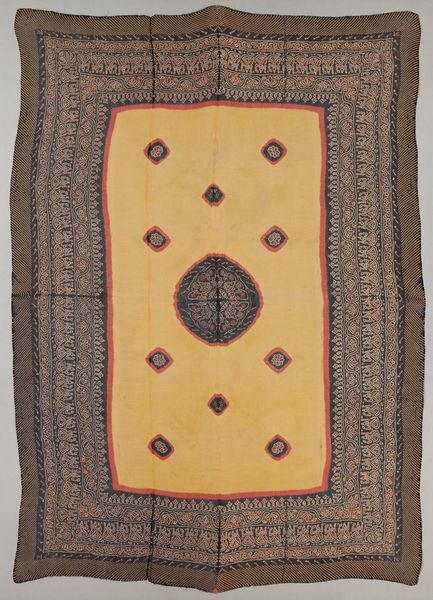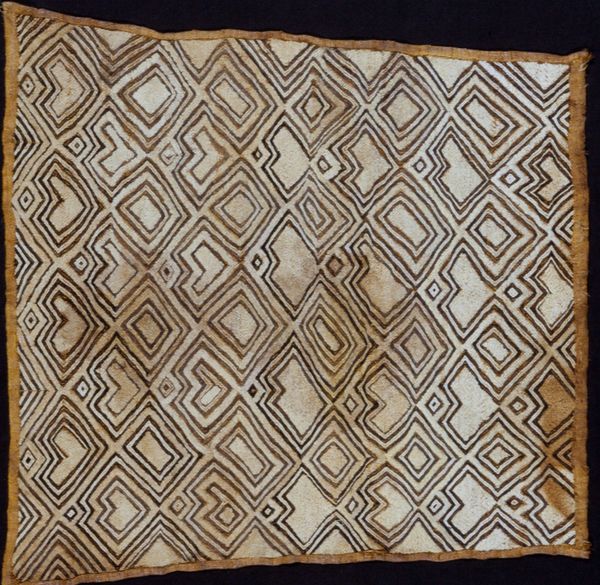
weaving, textile
#
weaving
#
textile
#
geometric pattern
#
geometric
#
indigenous-americas
Dimensions: 71.4 × 72.4 cm (28 1/8 × 28 1/2 in.)
Copyright: Public Domain
Curator: Welcome! Before us is a tunic from the Chimú culture, estimated to have been created sometime between 1470 and 1532. It’s now part of the collection at the Art Institute of Chicago. Editor: I’m immediately struck by the intricate geometric patterns. It looks so deliberate, but there's also an almost playful irregularity in the lines and shapes. What medium did they use? Curator: The tunic is primarily made using fibre-art and weaving techniques from textiles. Considering its construction, it wasn't just a garment; it was undoubtedly a signifier of status and identity within Chimú society. Editor: Absolutely! Look at the vertical columns that host various sizes of rectangles or waves that line the two edges, with a set of vertically zigzagged frets down the center, dotted symmetrically with large dark brown or black circles. How would the shapes and colors play in its construction? Curator: The visual language, indeed, could have been a complex symbolic system. Some researchers believe that such geometric forms in Chimú art relate to social hierarchy and beliefs around landscape, power and cosmological principles. Editor: Do you see any influence of past Indigenous American design? There seems to be very angular shapes as the dominant forms in this construction. Curator: That is precisely the intersection between traditional forms, materials, and new socio-political influences. I am sure the choices reflect how artists mediated the encounter with expanding political forces of its time. This piece represents the ability to reflect on cultural identity under pressure. Editor: The fact that something so delicate and detailed has survived speaks volumes. It’s really compelling. The limited palette heightens my awareness about the texture itself as woven object rather than illustrative narrative. Curator: Precisely. Surviving objects such as this become crucial evidence of lives lived and of power dynamics experienced in such eras. The history of its arrival at the Art Institute could probably fill another audio guide of its own. Editor: Thanks to this particular piece, I leave not only more educated on the textile construction of its time, but now envisioning how each woven shape acted in conjunction with a sense of symbolic purpose that is powerful still to this day.
Comments
No comments
Be the first to comment and join the conversation on the ultimate creative platform.
